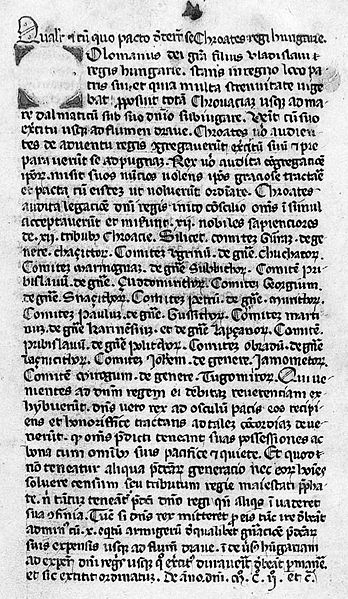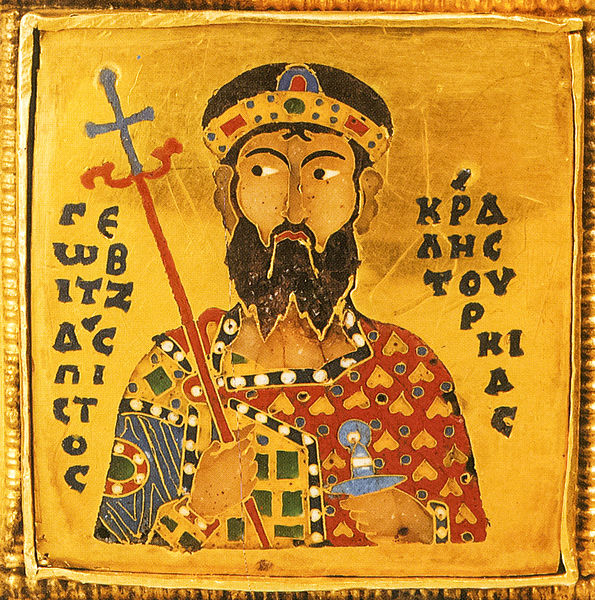Pacta conventa was an agreement concluded between King Coloman of Hungary and the Croatian nobility in 1102 or afterwards, defining the status of Croatia in the union with Hungary. The earliest manuscript of the document is of the fourteenth century, so some historians believe it is likely a forgery.
Photo of a copy of Pacta conventa or Qualiter
Coloman the Learned, also the Book-Lover or the Bookish was King of Hungary from 1095 and King of Croatia from 1097 until his death. Because Coloman and his younger brother Álmos were underage when their father Géza I died, their uncle Ladislaus I ascended the throne in 1077. Ladislaus prepared Coloman—who was "half-blind and humpbacked", according to late medieval Hungarian chronicles—for a church career, and Coloman was eventually appointed bishop of Eger or Várad in the early 1090s. The dying King Ladislaus preferred Álmos to Coloman when nominating his heir in early 1095. Coloman fled from Hungary but returned around 19 July 1095 when his uncle died. He was crowned in early 1096; the circumstances of his accession to the throne are unknown. He granted the Hungarian Duchy—one-third of the Kingdom of Hungary—to Álmos.
Coloman depicted in János Thuróczy's Chronicle of the Hungarians
Coloman's father Géza depicted on the lower part (Corona Graeca) of the Holy Crown of Hungary
Coloman's uncle Ladislaus depicted in the Chronica Hungarorum
Coloman—who is depicted as a hunchback in accordance with the tradition preserved in late medieval chronicles—is crowned king (from the Illuminated Chronicle).




